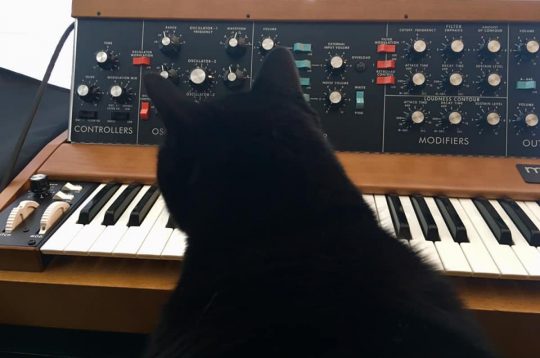
Black cat checking out the wonder that is the
“Finally! My turn…needs more sawtooth.”
One can never have too much sawtooth.

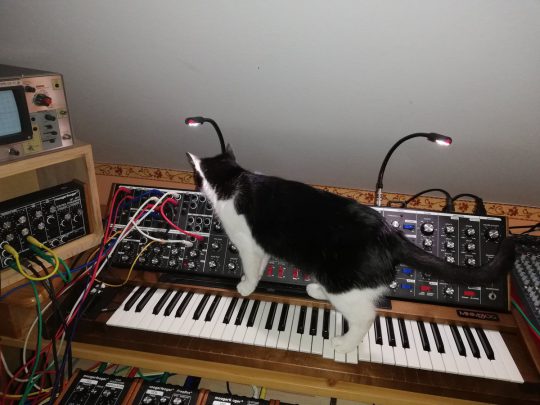
From @ModularSynths (Daniel.ModularSynths) on Twitter, we have this photo of a cat inspecting a
Immer neugierig (Always curious)
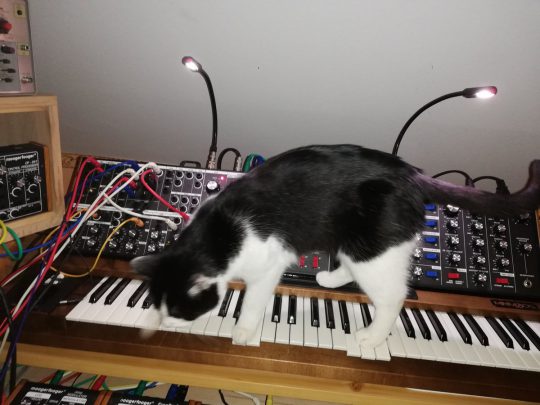
IWe are sure this cat is making some interesting music with his curiosity, although the Voyagers are monophonic. So we will only hear one paw at a time.
Please tweet us your cat-and-music @catsynth to be featured in a future post and across our social media platforms.
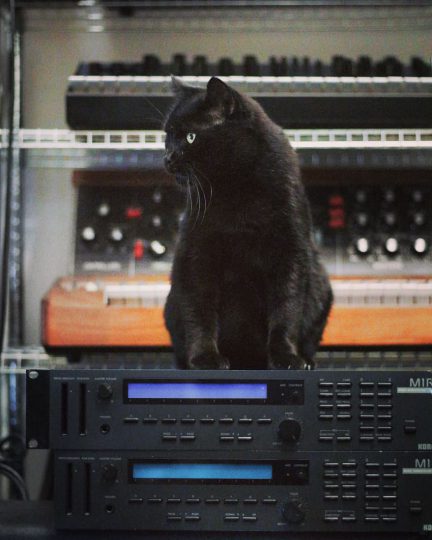
Marcel is back today, with a pair of Korg M1R modules. We also see a Minimoog in the back.
From Eric of polynominal.com.
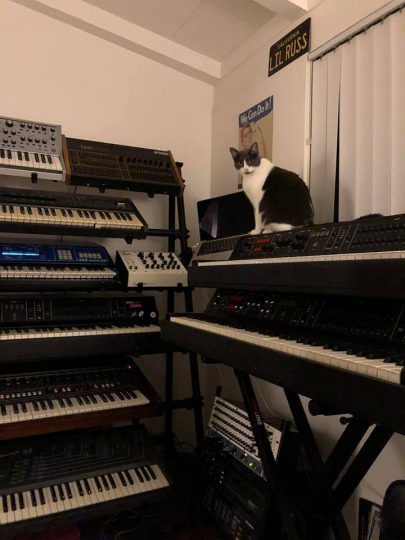
Grace returns to CatSynth, this time presiding as queen atop a rather impressive collection of vintage synths. We see Moog, Oberheim, PPG, Synergy, and more!
From our friend Alsún Ní Chasaide (Alilson Cassidy) on Facebook.
You see Grace’s other posts here.
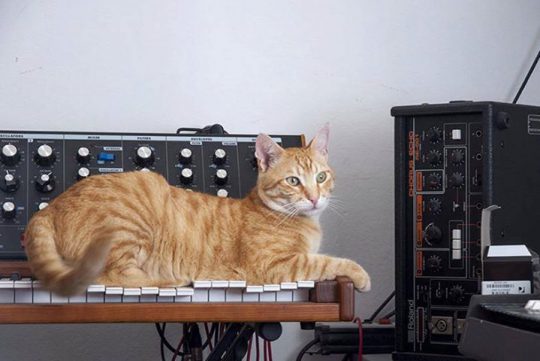
Bondo sits proudly on an original-series Moog Voyager. Next to him is a Roland RE-501 chorus echo. In the corner, one can see a bit of a vintage Vox Super Continental organ. Quite a collection!
From Davor Gazde via our Facebook page.
It’s the 99th Episode of CatSynth TV, and we have a special treat for all our readers and videos. It combines many of our interests: synthesizers, cats, experimental music and film, and highways.
Video shot along Highway 99 in California from Manteca through Stockton and heading towards Sacramento. Additional video and photography at CatSynth HQ in San Francisco.
Guest appearances by Sam Sam and Big Merp.
Original experimental synthesizer music by Amanda Chaudhary, based on melodies from “99 is not 100” by Moe! Staiano.
Synthesizers used:
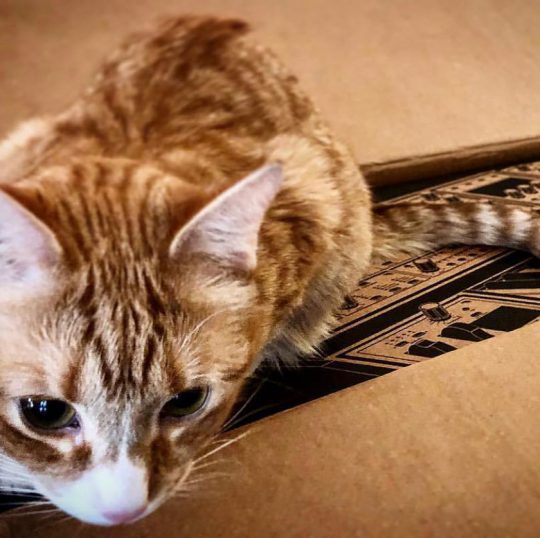
Cute cat-and-Moog pic from Moog Music, Inc via Instagram 😻
Regram: @archieandfox
Caption: @nan0particle